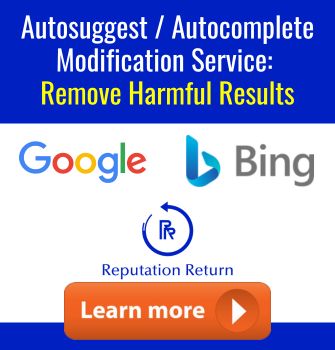In today’s hyper-connected world, a single misstep can escalate into a full-blown reputation crisis, impacting businesses and financial stability. 88% of brand executives view reputation risk as a top concern, highlighting the critical need for swift action to mitigate damage. Recent case studies, including those of Twitter and Target, underscore how delayed or mishandled responses can worsen a crisis, leading to significant financial losses.
Your company’s image is its most valuable asset. At ReputationReturn.com, we specialize in protecting and restoring online reputations, offering comprehensive solutions to navigate crises effectively. Our approach combines data-driven analysis with transparent communication, essential for recovery and rebuilding trust.
This guide outlines an eight-step process to address reputation crises and restore a positive brand image. Whether it’s training employees as brand ambassadors or monitoring social media, we provide actionable strategies. Understanding your online reputation score is crucial, as it directly influences consumer trust and loyalty.
Our mission is to empower businesses with the tools and expertise needed to safeguard their digital presence. Contact us today for a free, private consultation and let us guide you through the recovery process with care and precision.
Key Takeaways
- A strong reputation is essential for business success and customer trust.
- Quick action is critical to prevent severe financial damage from a reputation crisis.
- Data-driven analysis and transparent communication are key to recovery.
- Monitoring social media and training employees as brand ambassadors can help mitigate crises.
- Understanding your online reputation score is vital for maintaining consumer trust.
Understanding Reputation Crises
A reputation crisis arises when a company faces a significant threat to its public image, often triggered by a misstep, scandal, or operational failure. This situation can rapidly escalate, damaging consumer trust and business operations. For instance, Twitter’s crypto scam incident and Target’s data breach mishandling illustrate how poor crisis management can intensify negative outcomes.
Defining the Crisis and Its Impact
The crisis unfolds in phases, starting with an event that attracts public scrutiny. Media attention amplifies the situation, leading to heightened consumer concern. Companies must act swiftly to mitigate damage, as delays can worsen the impact and risk long-term financial loss.
Assessing Damage Through Data and Metrics
Evaluating the severity of a crisis involves analyzing key metrics such as sales performance, social media sentiment, and online data analytics. Accurate assessment is crucial to identify which aspects of the brand image have been affected and to distinguish between facts and misinformation. For example, learning how to rebuild company reputation requires a clear understanding of the crisis’s full context.
Proper assessment is the first step in developing an effective recovery process. It allows companies to address the root causes of the crisis and implement targeted strategies to restore trust. As highlighted in the 10 questions to ask your reputation management, understanding the crisis’s impact is essential for recovery.

Evaluating Corporate Reputation Recovery
In today’s digital age, a company’s public image can be fragile, and recovering from a crisis requires careful analysis and strategic communication. This section explores how businesses can assess their recovery progress and engage stakeholders effectively.
Analyzing Online Metrics and Media Coverage
Monitoring online metrics is crucial for understanding public sentiment. Tools like social media sentiment analysis can reveal trends and potential risks. For instance, Starbucks successfully tracked social media discussions to address customer concerns during a crisis. Similarly, media coverage should be assessed to gauge the broader narrative, as highlighted in the importance of reputation management.
| Metric | Importance | Result |
|---|---|---|
| Social Media Sentiment | Measures public opinion | Identifies areas for improvement |
| Investor Confidence | Reflects financial trust | Influences stock performance |
| Customer Reviews | Assesses satisfaction | Drives loyalty and retention |
Engaging Stakeholders and Transparent Communication
Transparency is key to rebuilding trust. Leaders should communicate clearly with stakeholders, including investors and customers. As Howard Schultz, former Starbucks CEO, noted, “Trust is built when leaders listen and act with empathy.” Issuing timely press releases and maintaining open dialogue demonstrates commitment to stakeholders.

Data-driven strategies ensure recovery plans are effective. By regularly reviewing progress and engaging stakeholders, companies can secure favorable results and strengthen their brand.
Developing an Effective Recovery Strategy
A well-crafted recovery strategy is essential to navigate a reputation crisis effectively. Every crisis is unique, requiring tailored approaches that address specific issues. For instance, prompt public apologies and coordinated social media responses have proven instrumental in turning around negative situations, as seen in Airbnb’s successful recovery.
Implementing Crisis Communication Tactics
Clear and empathetic messaging forms the backbone of crisis communication. At times, ‘stealing thunder’—addressing issues before they escalate—can prevent further damage. This proactive approach, combined with transparent communication, helps regain public trust.
Leveraging Media, Social Platforms, and Employee Advocacy
Utilizing various communication channels maximizes recovery efforts. Traditional media and social platforms allow businesses to reach a broad audience, while internal communications ensure alignment within the organization. Employee advocacy plays a crucial role, as motivated team members can serve as effective brand ambassadors.
| Strategy | Importance | Result |
|---|---|---|
| Social Media Engagement | Addresses public concerns directly | Reshapes brand perception |
| Employee Advocacy | Empowers team members | Strengthens brand image |
| Transparent Messaging | Builds trust | Enhances credibility |
By implementing these strategies, companies can effectively manage their reputation crisis and work towards recovery. For more insights, visit our guide to boosting your brand.
Implementing Long-Term Reputation Management
Building a resilient brand requires more than addressing immediate crises—it demands a long-term commitment to transparent actions and trust-building strategies. At ReputationReturn.com, we emphasize the importance of consistent, ethical behavior that aligns with customer expectations, fostering loyalty and support over time.
Building Trust Through Transparent Actions
Transparent communication is the cornerstone of trust. By maintaining open dialogue and accountability, companies can demonstrate their commitment to ethical practices. Employee training and proactive public relations initiatives further reinforce this commitment, ensuring that every action reflects the brand’s values and dedication to its customers.
Creating Positive Content and Strategic Remediation
Countering negative perceptions requires a strategic approach to content creation. Positive storytelling highlights organizational strengths and community contributions, reshaping brand perception. Strategic remediation involves continuous monitoring and proactive engagement to address issues before they escalate, ensuring a responsive and adaptive approach to reputation management.
| Strategy | Importance | Result |
|---|---|---|
| Transparent Communication | Builds Trust | Enhances Credibility |
| Positive Storytelling | Counters Negativity | Strengthens Brand Image |
| Proactive Engagement | Addresses Issues Early | Reduces Crisis Impact |
Contact ReputationReturn.com for a Free and Private Consultation
ReputationReturn.com offers expert guidance in navigating reputation management with a supportive and knowledgeable approach. Contact us today for a free, private consultation to discuss your needs and develop a tailored strategy for long-term success.
Conclusion
In today’s fast-paced digital landscape, safeguarding your brand’s future requires a well-crafted plan and proactive reputation management. The key to navigating a crisis lies in a robust recovery strategy that emphasizes transparency, stakeholder engagement, and continuous evaluation.
Industry examples, such as Johnson & Johnson’s handling of the Tylenol crisis, demonstrate how swift action and clear communication can lead to positive outcomes. By fostering a culture of transparency and continuous improvement, companies can build trust and resilience.
Reflect on your industry practices and adopt policies that prevent future incidents. At ReputationReturn.com, we are committed to providing expert guidance to support businesses through every stage of reputation management.
Take the first step toward a brighter future by contacting us for a free, private consultation. Together, we can develop tailored solutions to protect your brand and ensure long-term success through industry best practices and continuous public engagement.
FAQ
What are the first steps a company should take during a reputation crisis?
The first steps involve assessing the situation, engaging stakeholders, and communicating transparently. Acting swiftly to address concerns is crucial to minimizing damage and restoring trust.
How long does it typically take to recover from a reputation crisis?
Recovery time varies based on the crisis severity and response effectiveness. A well-executed strategy can lead to noticeable improvements within months, though full recovery may take longer.
What role do employees play in reputation management?
Employees are vital as they can serve as brand ambassadors. Their involvement in advocacy and honest communication enhances trust and accelerates recovery efforts.
How can a company rebuild trust after a crisis?
Rebuilding trust involves consistent transparent communication, delivering on commitments, and demonstrating accountability. These actions help restore confidence among stakeholders.
What strategies are most effective in managing a reputation crisis?
Effective strategies include proactive communication, leveraging media and social platforms, and employee advocacy. Tailoring messages to different audiences ensures comprehensive engagement.
How can social media impact reputation recovery?
Social media can amplify both positive and negative sentiments. Monitoring and engaging on these platforms is essential to guide public perception and address concerns promptly.
What is the importance of leadership in crisis management?
Strong leadership provides direction and reassurance. Visible commitment from leaders enhances credibility and demonstrates a genuine focus on resolving the crisis.
How should a company measure the success of its recovery strategy?
Success can be measured through improved stakeholder feedback, positive media coverage, and increased customer engagement. These metrics indicate effective recovery progress.
What role does transparency play in reputation management?
Transparency builds trust and credibility. Open communication about actions and commitments is key to fostering a positive brand image during and after a crisis.
How can a company prevent future reputation crises?
Preventing future crises involves continuous monitoring, learning from past incidents, and maintaining ethical practices. Proactive risk management strategies also play a critical role.















